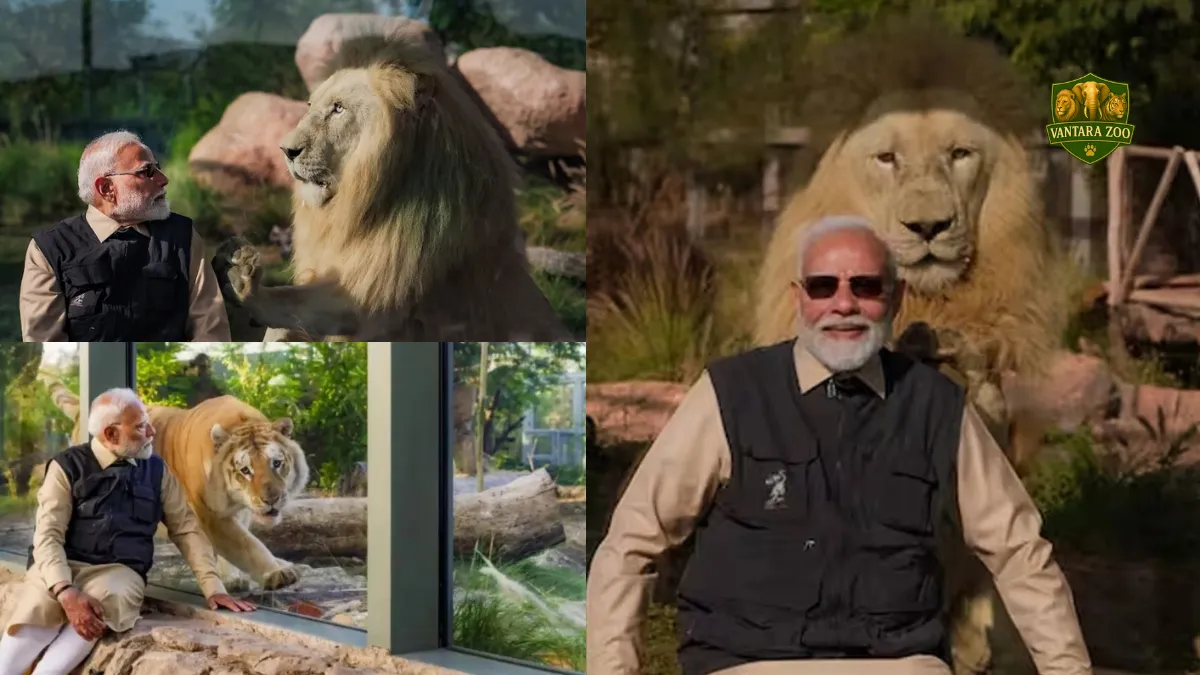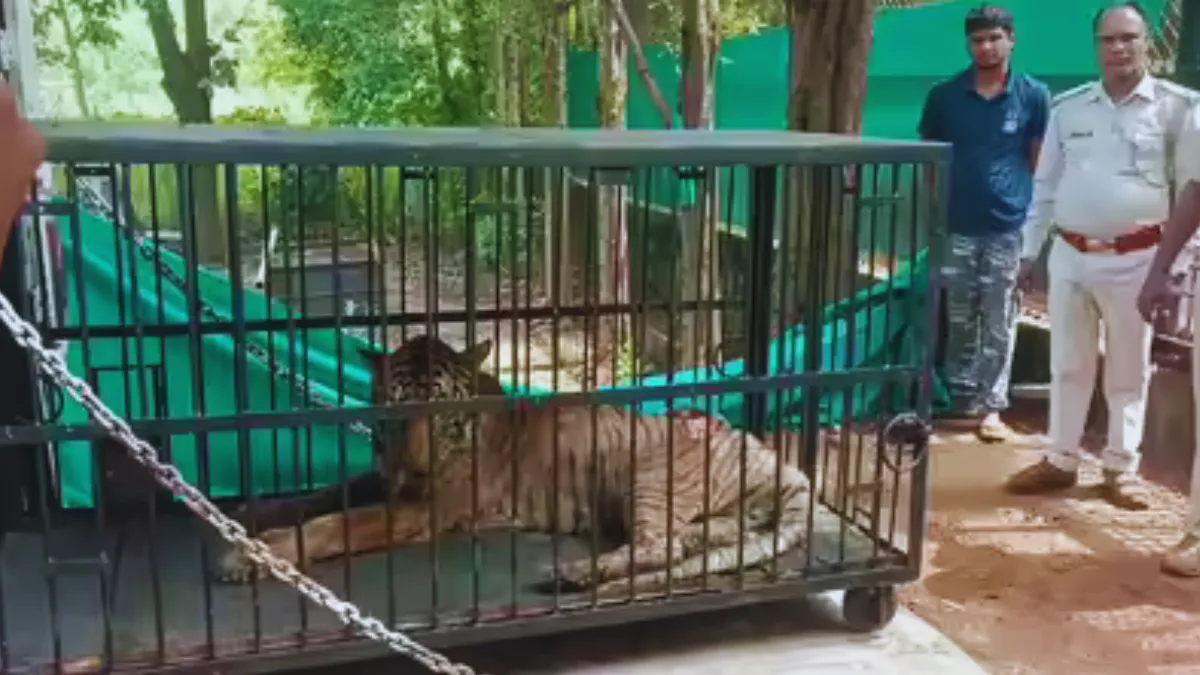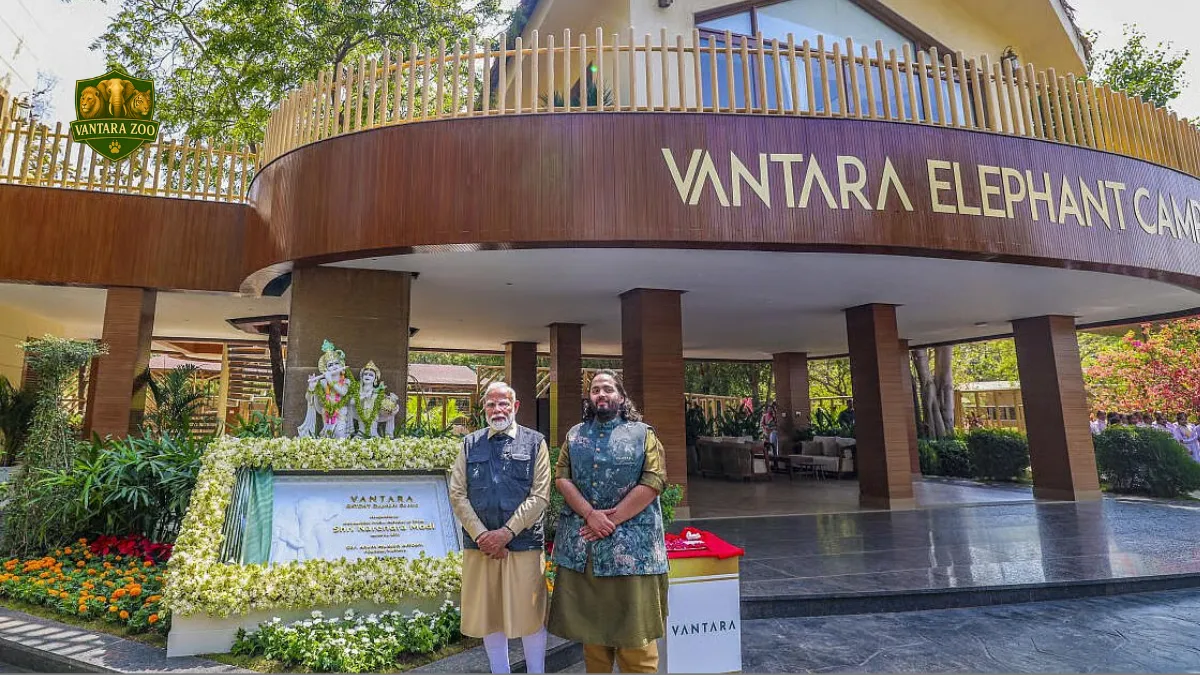Vantara Zoo is quickly becoming one of the most significant names in India’s conservation landscape. Unlike traditional zoos that focus primarily on displaying animals for visitors, Vantara Zoo is designed as a sanctuary for rehabilitation, research, and protection of diverse species. Located in Jamnagar, Gujarat, the zoo is part of the broader Vantara (Star of the Forest) initiative launched by Reliance Industries under the vision of Anant Ambani.
This ambitious project is not just about housing animals—it’s about giving them a safe and dignified life while also inspiring people to understand the importance of conservation. With modern facilities, vast green landscapes, and a strong focus on animal welfare, Vantara Zoo represents a new era in how zoos can contribute to biodiversity and education.
Why Vantara Zoo Stands Out
Traditional zoos in many countries often face criticism for cramped enclosures, lack of proper care, and commercial focus. Vantara Zoo challenges these old ideas by creating a space where rescued animals can thrive in conditions close to their natural habitats.
Here’s what makes it unique:
- Rescue-Centered Approach: Many of the animals at Vantara Zoo have been rescued from circuses, illegal captivity, or conflict zones. The goal is to give them a second chance at life.
- Veterinary Excellence: The zoo includes one of the most advanced veterinary hospitals in Asia, equipped with MRI machines, X-ray facilities, and surgical theaters designed specifically for wildlife.
- Natural Enclosures: Instead of cages, enclosures are modeled after the animals’ ecosystems, with grasslands, water bodies, and trees.
- Endangered Species Protection: Special breeding programs are in place to help conserve species on the brink of extinction.
- Educational Outreach: Vantara Zoo isn’t just for animals—it’s also for people. Awareness programs, guided tours, and workshops aim to educate visitors about the importance of protecting wildlife.
The Vision Behind Vantara Zoo
The vision of Vantara Zoo is deeply tied to Anant Ambani’s passion for animals and his belief in compassionate care. He has repeatedly emphasized that the goal is not to create a tourist attraction, but rather a world-class hub for wildlife rescue, rehabilitation, and conservation research.
By providing medical care, shelter, and natural habitats, the zoo becomes a place of healing for animals that have suffered neglect or abuse. It also reflects a broader vision of making India a leader in ethical wildlife care and conservation science.
Facilities and Features of Vantara Zoo
Vantara Zoo is a large-scale, carefully designed project that covers multiple aspects of animal welfare and conservation. Some of the facilities include:
- Advanced Veterinary Hospital – Equipped with modern surgical theaters, critical care units, and diagnostic tools like CT scans and MRIs for animals.
- Rescue and Rehabilitation Centers – Specialized care areas for animals that have been injured, abused, or rescued from illegal captivity.
- Naturalistic Enclosures – Habitats designed to mimic forests, grasslands, wetlands, and deserts, depending on the species.
- Special Care for Elephants – A dedicated elephant rescue center provides medical care, hydrotherapy pools, and large roaming spaces.
- Research and Training Facilities – Collaboration with international experts ensures global standards in animal care, while training programs help build local expertise.
Key Details of Vantara Zoo
Here’s a table that highlights the main information about the zoo:
| Feature | Details |
|---|---|
| Location | Jamnagar, Gujarat, India |
| Initiative By | Reliance Industries, led by Anant Ambani |
| Primary Focus | Wildlife rescue, rehabilitation, and conservation |
| Facilities | Veterinary hospital, animal rescue centers, natural enclosures |
| Species Housed | Elephants, lions, tigers, leopards, exotic birds, reptiles, and more |
| Conservation Efforts | Breeding programs for endangered species, habitat restoration projects |
| Visitor Experience (Future Plan) | Guided tours, educational programs, awareness campaigns |
Wildlife Conservation at the Core
At its heart, Vantara Zoo is about wildlife conservation. India is home to some of the richest biodiversity in the world, but urbanization, poaching, and climate change have put many species at risk. By establishing a facility of this scale, Reliance is contributing to the long-term survival of endangered animals.
Some of the conservation efforts include:
- Breeding Programs: For species like the Asiatic lion, Indian leopard, and rare reptiles.
- Habitat Restoration: Creating green spaces within and around the zoo to mimic natural ecosystems.
- Anti-Poaching Awareness: Educating communities about the dangers of illegal wildlife trade.
- Scientific Research: Using data and modern technology to study animal health and behavior.
The Role of Vantara Zoo in Education
One of the most impactful aspects of Vantara Zoo is its role in education. The zoo is expected to host:
- Guided Tours: Where trained experts explain animal behavior, conservation needs, and rescue stories.
- School Programs: To engage children and teach them compassion for animals from an early age.
- Workshops and Seminars: For students, researchers, and wildlife professionals.
- Awareness Campaigns: To reduce human-animal conflict and promote sustainable living.
By educating the next generation, the zoo hopes to build a future where humans and animals can coexist more harmoniously.
Vantara Zoo and Global Recognition
What makes Vantara Zoo even more special is its global ambition. By collaborating with international experts in veterinary medicine and conservation, the zoo is positioning itself as a world leader in ethical animal care.
This has several potential outcomes:
- Strengthening India’s reputation in global conservation efforts
- Attracting researchers and conservationists from around the world
- Setting a model for other countries on how zoos can be transformed into sanctuaries
Challenges and Future Plans
While the vision for Vantara Zoo is impressive, maintaining such a large-scale facility also comes with challenges. Continuous funding, staff training, and adapting to the changing needs of animals are crucial. However, with Reliance’s long-term commitment and Anant Ambani’s passion, the project has strong foundations for success.
Future plans include:
- Expanding educational programs
- Increasing partnerships with global conservation organizations
- Introducing advanced technology for animal monitoring and health tracking
- Opening selected areas for visitors in a controlled, eco-friendly way
Why Vantara Zoo Matters for India
India has always had a deep cultural and spiritual connection with animals, from elephants revered in temples to tigers symbolizing power. However, in modern times, conservation has become more critical than ever. Vantara Zoo bridges tradition and modern science by creating a facility that reflects compassion while also using advanced methods to protect biodiversity.
Its importance can be summed up in three key ways:
- Rescue and Rehabilitation: Giving animals a chance to live with dignity.
- Conservation and Research: Protecting endangered species for future generations.
- Education and Awareness: Inspiring people to respect and protect wildlife.
Also read: Vantara Wildlife India: A New Hope for Conservation and Animal Welfare
Conclusion
Vantara Zoo is not just another zoological park—it is a bold step toward reimagining what a zoo can be. By focusing on rescue, rehabilitation, and conservation, it offers a model of ethical wildlife care that could inspire similar projects worldwide.
With world-class veterinary facilities, natural habitats, and a vision rooted in compassion, Vantara Zoo is set to become a landmark in India’s conservation journey. For animals once neglected or abused, it provides hope. For people, it offers knowledge and inspiration. And for the planet, it represents a commitment to preserving biodiversity for generations to come.
As Anant Ambani and Reliance Industries continue to expand this initiative, Vantara Zoo may well become one of the most respected wildlife sanctuaries in the world—proving that when compassion meets science, the future of conservation looks bright.










